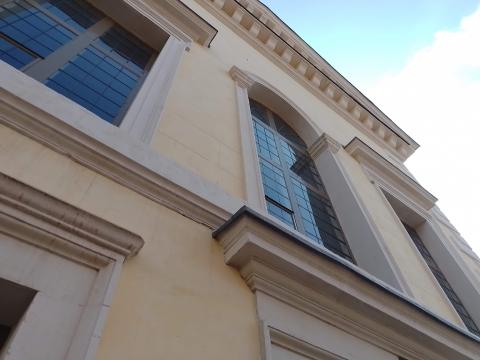The Queen's Chapel, St James's Palace

To the Queen’s Chapel at London’s St James’s Palace I have never managed to gain entry, but it is a building still worthy of comment. It was begun in 1623 when a young Prince Charles was courting the Spanish Infanta and wished to provide her with a Roman Catholic place of worship, a highly controversial scheme in light of the illegality of saying the Mass from the time of Queen Elizabath. The proposal of marriage came to nothing, much to the relief of the puritans, but from the fire to frying pan they went, for he set his eyes on the French princess Henrietta Maria, whom he finally married. The chapel therefore became hers, and she stocked it with French confessors and priests. As Queen, she was a supportive wife, but only urged her weak husband to assume brittle positions when dealing with his subjects, which helped foment civil war. During those wars and afterward when Charles was executed, the Queen’s Chapel was used as a barrack block and then a stable rather than a Mass House.
If Henrietta Maria was a supportive wife, Charles was an unusually faithful husband. It is a pity the pair were not mere gentry rather than King and Queen of a staunchly Protestant land. This chapel was constructed to accommodate what was then a dangerous, foreign faith: the Pope was a secular monarch as well as a religious leader, and urged English subjects to assassinate their own Head of State at the time of Elizabeth. For that compromise, Charles acquired a loving wife but a headless body, turning a loyal kingdom into a radical republic.
Tolerating falsehood is a requisite of living in a free society, but accommodating it and courting it will only lead to worse evils.

- Log in to post comments


 Sunday Worship 10.45am & 6.00pm
Sunday Worship 10.45am & 6.00pm